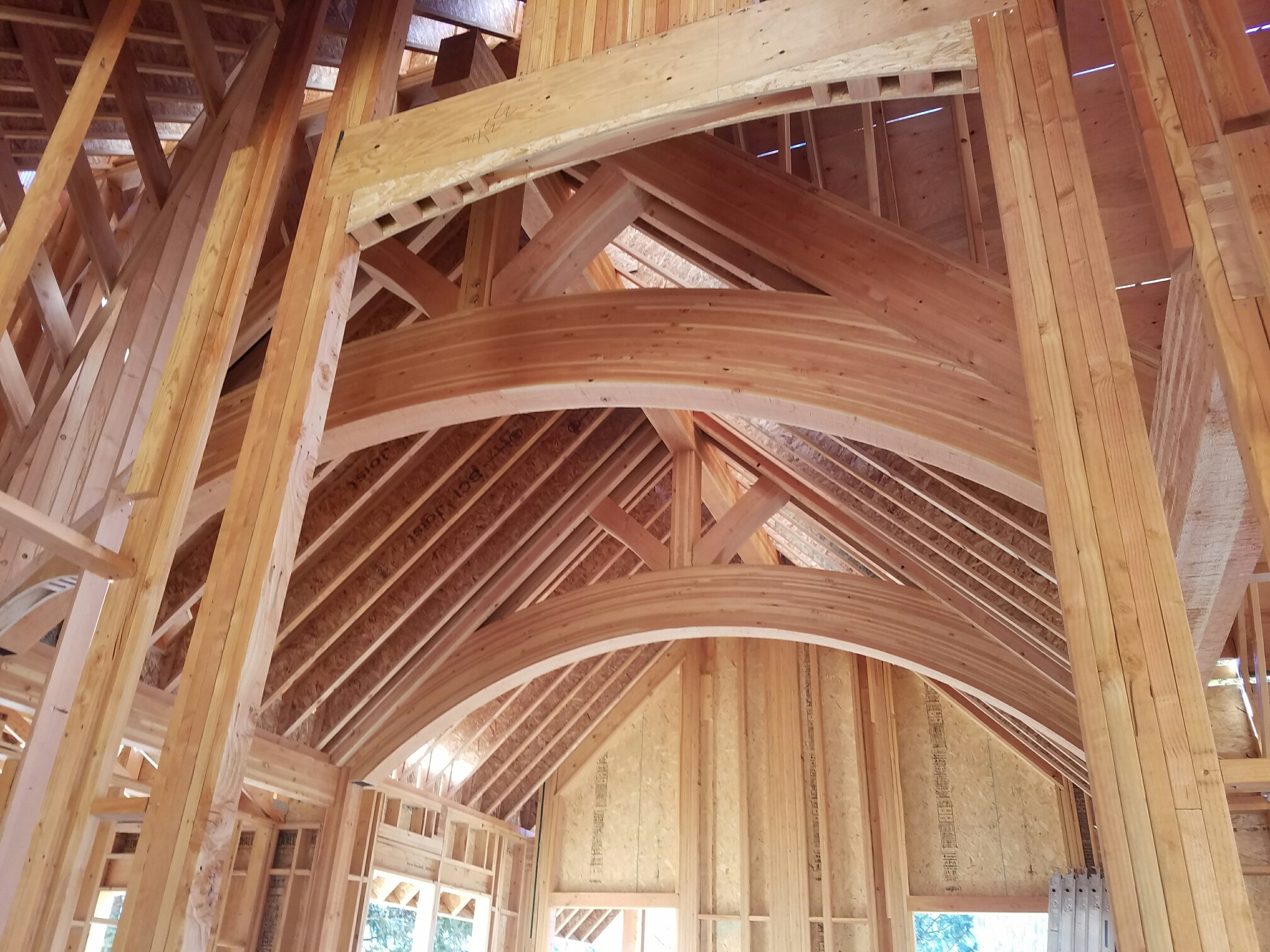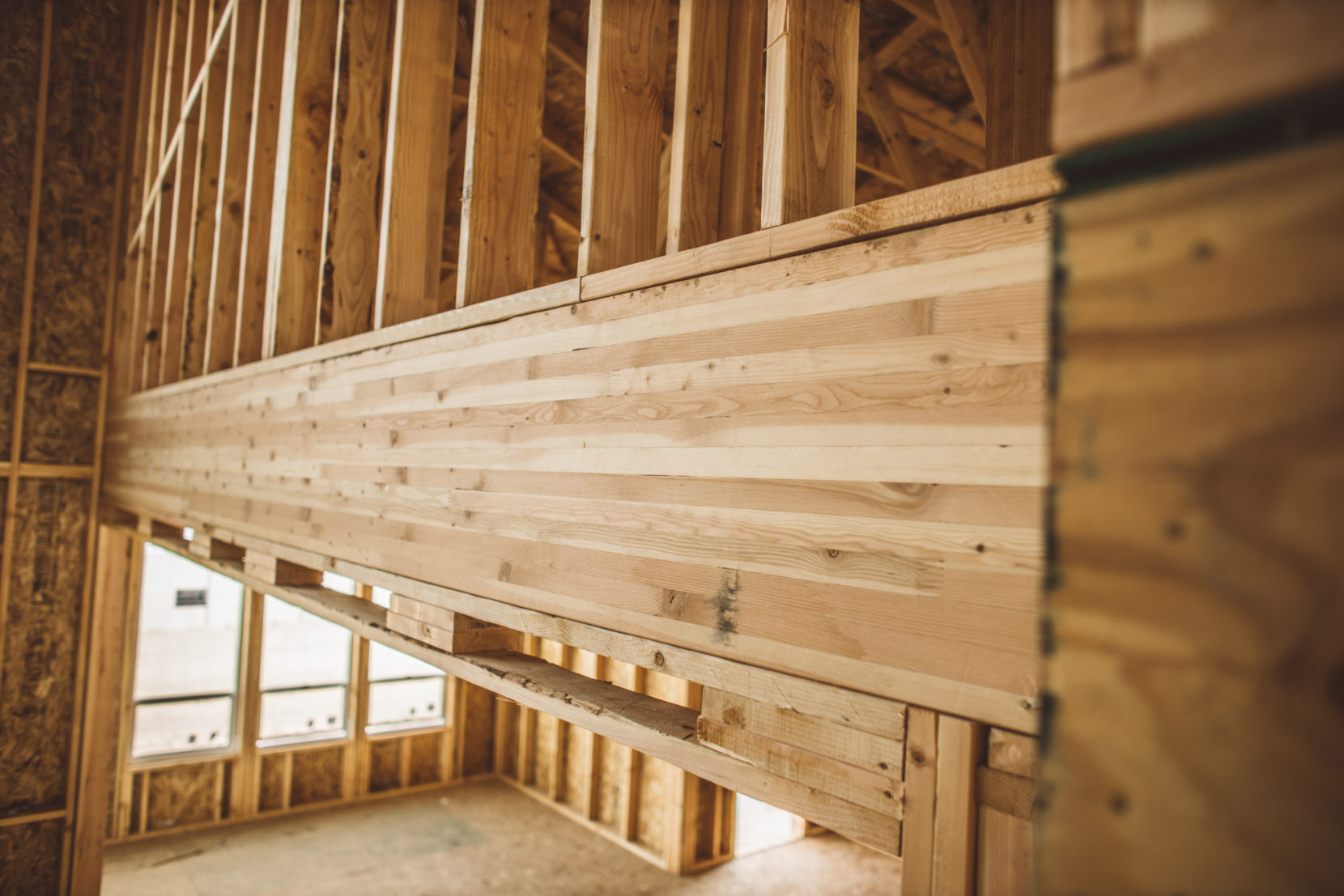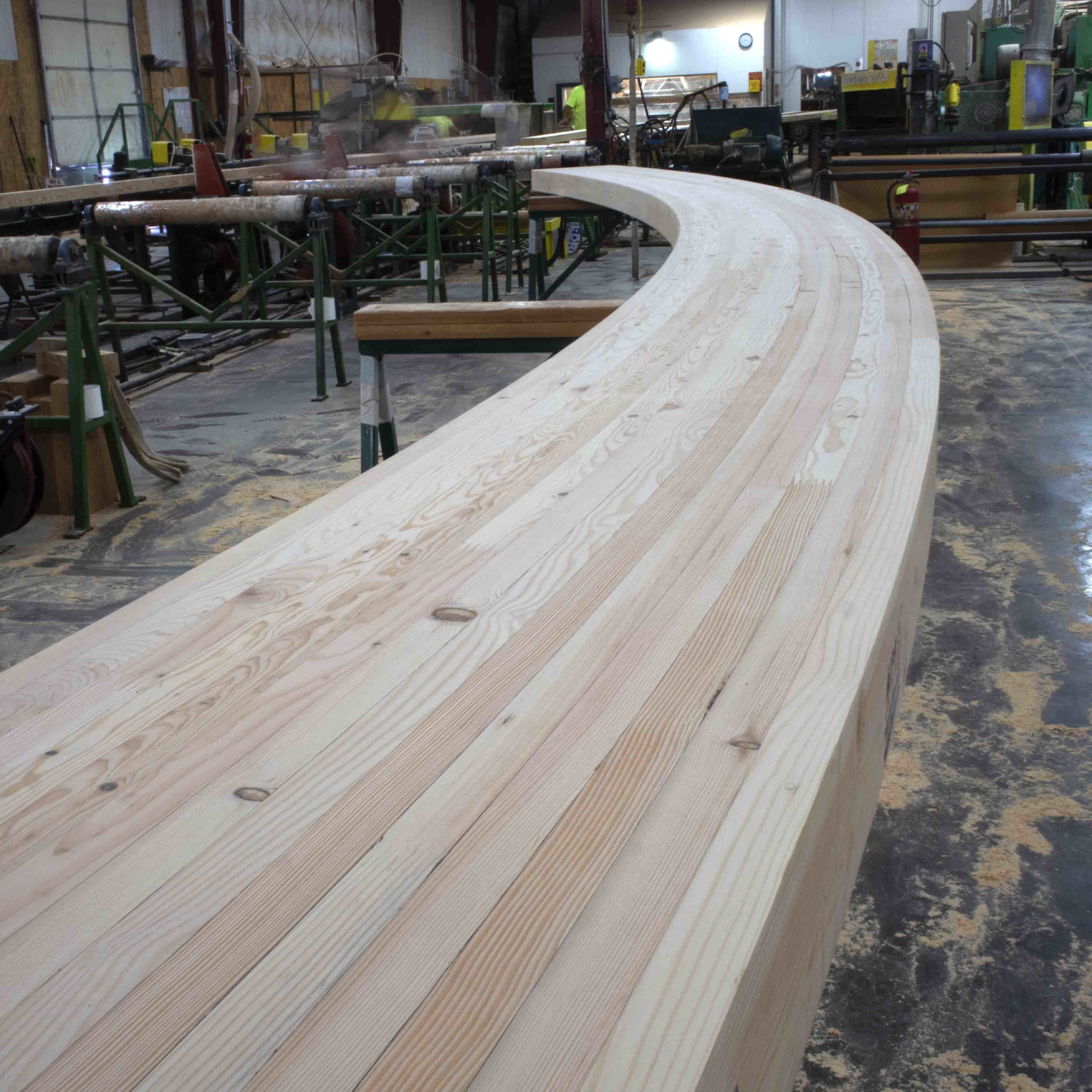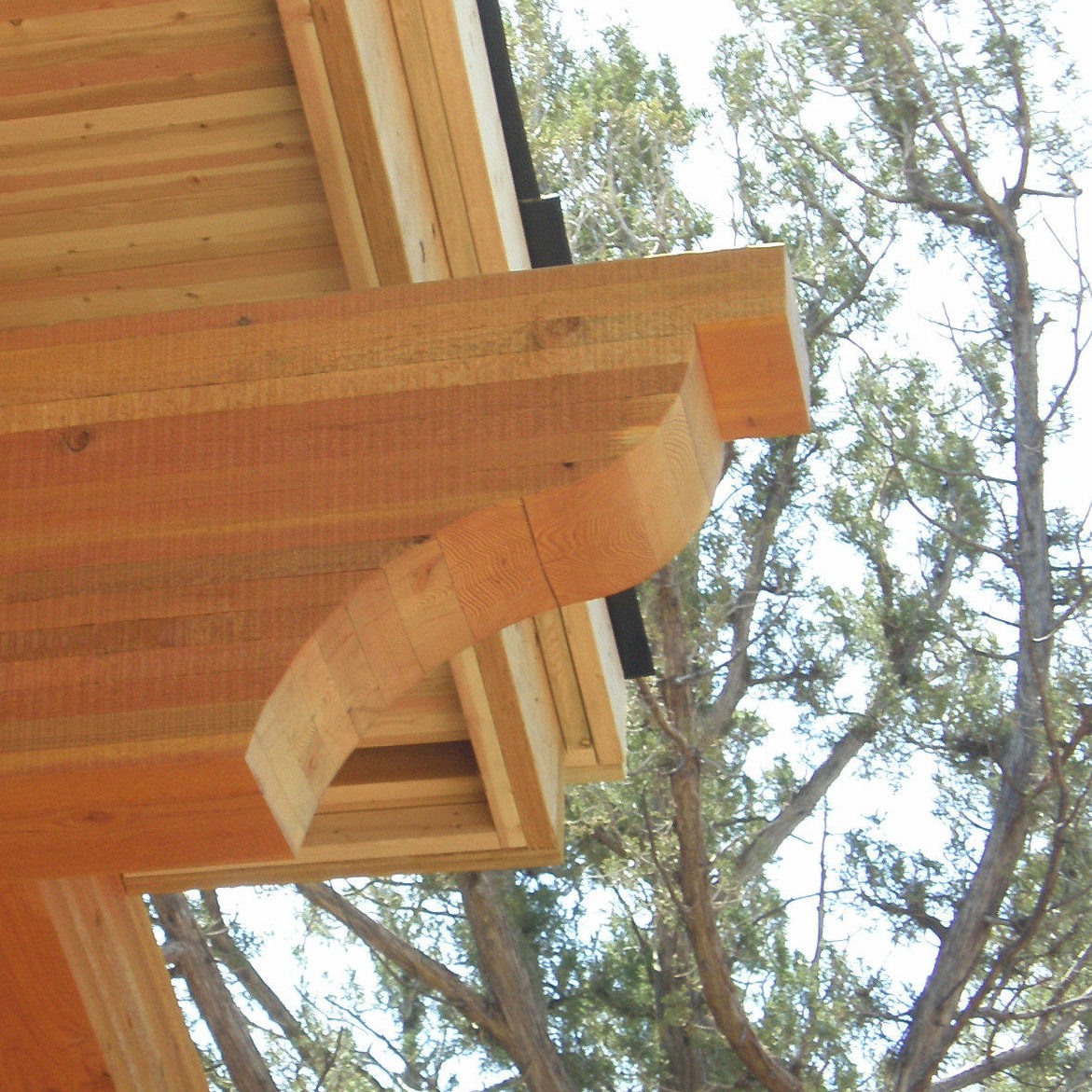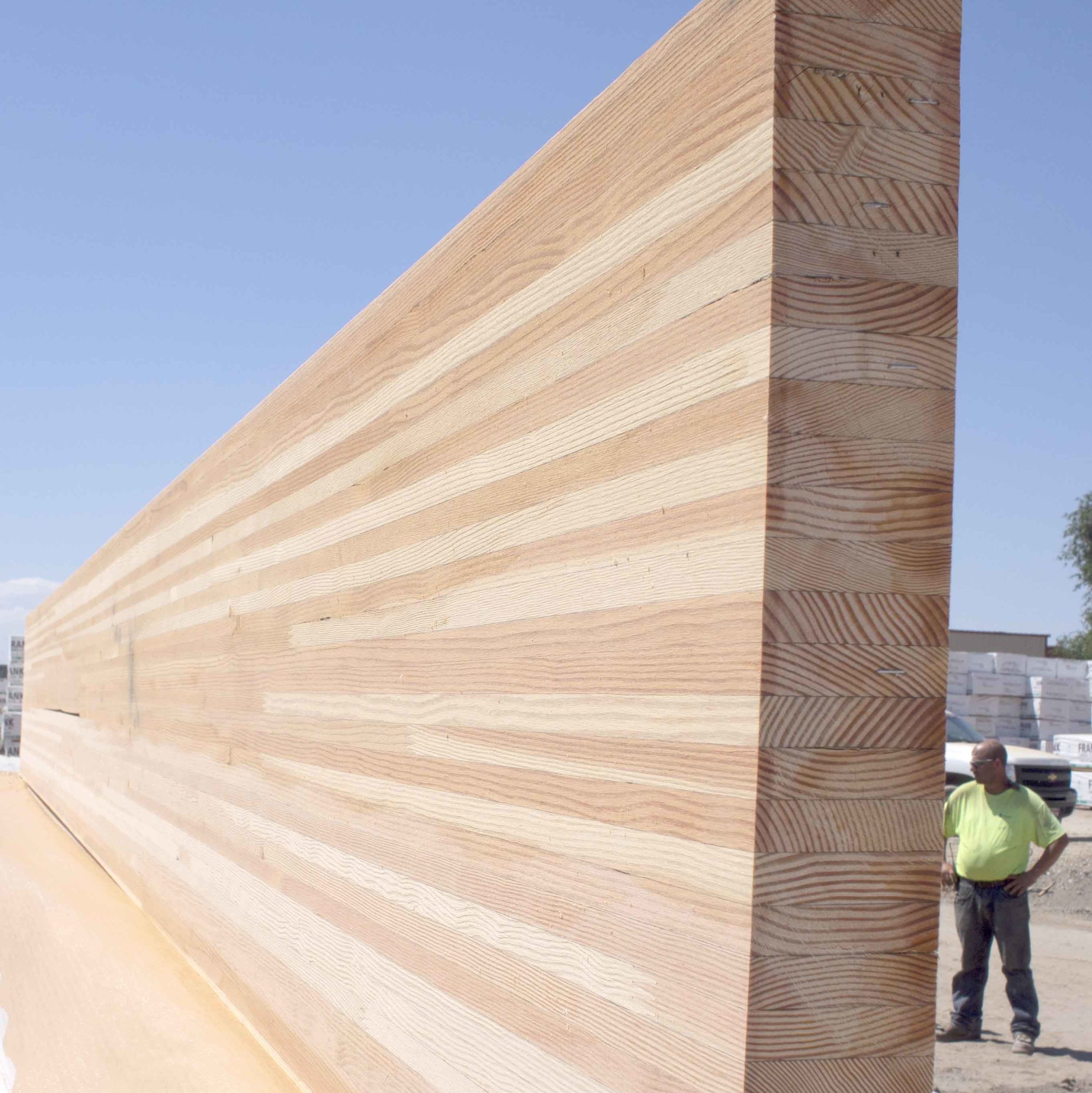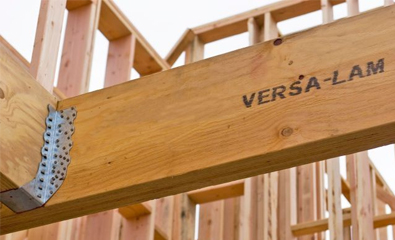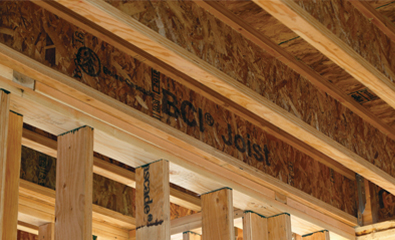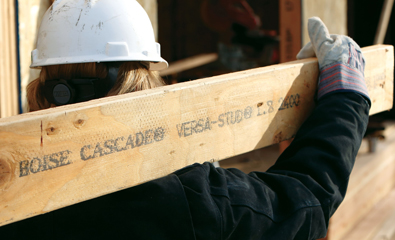Professionals rely on BOISE GLULAM to solve a wide range of challenges. Whether you're tackling extra-long spans or designing custom arches, glulam beams can provide the strength you need — plus the rich look of natural wood. BOISE GLULAM gives you the strength and performance you want on the job site with superior service you need for your business — and for your customers.
Frequently Asked Questions About Glulam Beams
What is glulam?
Glulam is short for “glued laminated timber.” It is one of the original engineered wood products made by bonding together individual pieces of lumber with adhesives to create large, strong, and versatile beams.
How are glulam beams made?
Glulam beams are made by stacking and gluing together multiple layers of dimension lumber, typically using softwood species such as Douglas Fir/Larch or Alaskan Yellow Cedar for outdoor applications. The layers are then pressed and bonded under high pressure to form a solid beam.
How does glulam compare to LVL?
Glulam and LVL (laminated veneer lumber) are both engineered wood products, but they differ in their construction. Glulam is made by bonding dimension lumber together, whereas LVL is made by bonding thin layers of wood veneers together.
What species is glulam made from?
Glulam beams can be made from various species of softwood, including Douglas Fir, Larch and Alaskan Yellow Cedar. The choice of species depends on factors such as local availability, structural requirements, aesthetic preferences, and application.
Where can glulam be used?
Glulam beams have a wide range of applications. They are commonly used in residential and commercial construction for beams, columns, and headers. Glulam can also be found in bridges, sports stadiums, exhibition halls, churches, and other structures where long spans and structural strength are required. Depending on the species used, they can be used for internal or exposed applications—Alaskan Yellow Cedar can be used in a deck application.
Can I get BOISE GLULAM in full widths?
Yes. BOISE GLULAM is available in 3½″ and 5½″ widths, which are manufactured to create cost-efficiency and versatility in single and multi-family projects. Beams and headers are available in a variety of appearance grades.
Do glulam beams have camber?
Yes, many glulam beams may have a slight camber, which means they are slightly curved along their length. The camber is intentionally designed to counteract the natural deflection that occurs when the beam supports a load. When installing a glulam beam, it is important to orient it with the crown (top) facing upward to ensure proper load distribution.
Can you drill holes in a glulam beam?
Yes, it is possible to drill holes in Boise Glulam® beams. However, it is crucial to follow our guidelines and engineering specifications to ensure the structural integrity of the beam is not compromised. Generally, the size, location, and orientation of the holes should be determined by a qualified engineer or the glulam manufacturer.
Refer to the Boise Cascade® Glulam Beam and Specifiers Guide to determine the approved hole location for BOISE GLULAM beams.
Can glulam be used as a column?
Yes, glulam can be used as a column or post in construction. Glulam columns provide excellent load-bearing capacity and structural stability. Like other glulam applications, the selection and sizing of glulam columns should be based on engineering considerations, taking into account the specific design requirements and loads imposed on the column.
Refer to the Boise Cascade® Glulam Beam and Specifiers Guide or our King Beam Specifiers Guide to determine Column Allowable Design Stresses.
